History Hub Ulster is currently working with Mid and East Antrim Borough Council in researching men who may qualify for inclusion on the Larne War Memorial. One case has greatly interested our researcher, Nigel Henderson, that of Larne Grammar School pupil, Hubert Lawson.
Hubert James Lawson was born on 6th November 1897 at Main Street in Larne to William Lawson, Company Secretary for the Shamrock Shipping Company, and Isabella Lawson (nee Norritt). The family lived at Bonavista Terrace in 1901, at Old Glenarm Road in 1911, and later at “Elsinore” on Chaine Memorial Road. Hubert was educated at Larne Grammar School and enlisted with the Royal Irish Fusiliers on 24th February 1916 (Regimental Number 24010).
Private Lawson served on the Western Front with 9th Battalion and was discharged as “No longer physically fit for war service” due to illness on 27th June 1917, with Silver War Badge Number 198321. The medal card, medal rolls, and pension cards record his name as Herbert James Lawson, but one document includes an annotation that Hubert is the correct name. He was boarding at 11 Fountainville Avenue, the home of Miss E Livingstone, when he was awarded a 20% Disability Pension in respect of a collapsed lung at the rate of eight shillings per week.
Hubert graduated from Queen’s University as a Bachelor of Medicine and a Bachelor of Science in July 1924. He was a surgeon when he sailed from Shanghai onboard SS Yangtse, arriving at New York on 1st March 1927, before continuing his journey to the United Kingdom. He married Marjorie Brockbank at Ulverston in Lancashire, the marriage being registered in Quarter 1 1928. The UK and Ireland Medical Register of 1930 records that Hubert was working for the Malayan Medical Service and they were living in Penang Province when their first son was born. Hubert was Medical Officer at Seremban before being appointed as Chief Medical Officer for Kelantan.

During the Japanese advance, Hubert arranged for Marjorie and their three sons – John (14), Billy (12), and Dennis (9) – to be evacuated to Australia. Hubert remained at his post at the Teloh Anson Hospital in Perak and was interned by the Japanese after the Fall of Singapore in February 1942. On 29th October 1944, he was allowed to send a message card from Singapore to his family in Sydney. The message included the following line, “Trust will not be long before we are all united”.
Dr. Hubert James Lawson died of a stomach tumour at the Sime Road Civilian Internment Camp on 2nd December 1944, aged 47, and is buried in Choa Chu Kang Cemetery in Singapore.
The camp occupied a 470-acre site and had been the Combined Operations Headquarters of the British Army and Air Force from December 1941 until the Fall of Singapore. Hubert left effects of £1137 fourteen shillings and nine pence (approximately £43,487 in current terms) to Marjorie, who had returned to Northern Ireland with their sons to live at “Elsinore” in Larne.
Dr Lawson is commemorated on the UK Civilian Roll of Honour for the Second World War and his name was recently added to the war memorial plaque at Larne Grammar School. He is also commemorated on a side-panel at the Lawson family plot in Larne’s Greenland Cemetery.

William Norritt Stewart Lawson, the second son of Hubert and Marjorie, served in the Korean War as a Lance-Corporal with 55th Independent Squadron Royal Engineers, part of the 1st Commonwealth Division. In addition to being awarded the United Nations Korea Medal, he was awarded the British Empire Medal (Military Division) in “recognition of services in Korea during the period 1 August 1954 to 31 January 1955”.

After leaving the army, William pursued a career as a marine engineer in the Merchant Navy and was an engineer officer on SS Ramore Head when he was presented with the British Empire Medal at Thiepval Barracks on Friday 17th August 1956 by Lieutenant-General Sir Brian Kimmins, GOC Northern Ireland District.
William and Isabella Lawson lived at “Elsinore” until their deaths. Isabella died on 18th March 1944, aged 72, and William Lawson died on 2nd April 1947, aged 81. They are buried in the Greenland Cemetery in Larne. Marjorie Lawson died in Belfast on 5th October 1954, aged 50, but her place of burial is not known. William Christie Lawson, Hubert’s older brother, was the Managing Director of the Shamrock Shipping Company in 1947.
Nigel Henderson, History Hub Ulster Researcher
—————————–
Acknowledgements:
Photograph in Malayan Medical Service uniform provided by John Hoy
Lawson family plot photograph Jenny Brennan
Cemetery commemoration image is from the Singapore Tombstones Epigraphic Materials website
Newspaper photograph of William Norritt Stewart Lawson from Belfast News-Letter (18th August 1956)




 Whilst researching Arthur Moore Cinnamond, a victim of the 1941 German air raids, I came across an obituary in the Belfast Telegraph that recorded that he was a member of Cliftonville Golf Club. Hugh Daly from Cliftonville Golf Club informed me that Arthur had been a member of the club’s council in 1911 and was club Captain in 1925. At the Annual Meeting of the club in March 1919, Arthur Cinnamond intimated his intention to provide a special victory prize to commemorate club members who had served in the Great War.
Whilst researching Arthur Moore Cinnamond, a victim of the 1941 German air raids, I came across an obituary in the Belfast Telegraph that recorded that he was a member of Cliftonville Golf Club. Hugh Daly from Cliftonville Golf Club informed me that Arthur had been a member of the club’s council in 1911 and was club Captain in 1925. At the Annual Meeting of the club in March 1919, Arthur Cinnamond intimated his intention to provide a special victory prize to commemorate club members who had served in the Great War. William Henry Calvert was born on 7th June 1892 at Oldpark Road to William Henry Calvert, a draper, and Margaret Calvert (nee McKay). The family was living at Cliftonville Street in 1911 when William junior was an apprentice jeweller with Gibson and Company of Donegall Place and Castle Place. William Henry Calvert senior was a member of Cliftonville Golf Club Council in 1911 and served on the committee for 18 years.
William Henry Calvert was born on 7th June 1892 at Oldpark Road to William Henry Calvert, a draper, and Margaret Calvert (nee McKay). The family was living at Cliftonville Street in 1911 when William junior was an apprentice jeweller with Gibson and Company of Donegall Place and Castle Place. William Henry Calvert senior was a member of Cliftonville Golf Club Council in 1911 and served on the committee for 18 years. John Dobson was born on 21st December 1889 at Connor in County Antrim to William
John Dobson was born on 21st December 1889 at Connor in County Antrim to William Edwin Samuel Frizelle was born on 26th January 1894 at Ballysaggart near Dungannon to
Edwin Samuel Frizelle was born on 26th January 1894 at Ballysaggart near Dungannon to Frederick William Girvan was born on 23rd May 1893 at Kilbride near Doagh to Robert
Frederick William Girvan was born on 23rd May 1893 at Kilbride near Doagh to Robert Arthur Moore Cinnamond was born on 8th October 1872 at University Street to Arthur Cinnamond, a wine merchant, and Eliza Cinnamond (nee Barber). He was educated at Royal Belfast Academical Institution, Queen’s College in Belfast, and Christ Church in Oxford. After completing his education, Arthur joined the family firm and he married Harriett Mary Molyneux Rogers of Princethorpe, Cliftonville Road, on 22nd November 1898 at St Patrick’s Roman Catholic Church, Donegall Street. In 1901, they were living at Glenisheen on Cliftonville Road and Arthur was a director in Cinnamond Moore Limited (Distillers and Wholesale Wine and Spirit Merchants) of Church Lane. In 1911, Arthur was an auctioneer and valuer, and he became the sole proprietor of Clarke Sons (Auctioneers) of Rosemary Street in 1913. He joined Civic Masonic Lodge No 425 on 13th December 1916 and remained as a member until his death. Harriet Cinnamond died at their Glenisheen home on 3rd October 1938, aged 68.
Arthur Moore Cinnamond was born on 8th October 1872 at University Street to Arthur Cinnamond, a wine merchant, and Eliza Cinnamond (nee Barber). He was educated at Royal Belfast Academical Institution, Queen’s College in Belfast, and Christ Church in Oxford. After completing his education, Arthur joined the family firm and he married Harriett Mary Molyneux Rogers of Princethorpe, Cliftonville Road, on 22nd November 1898 at St Patrick’s Roman Catholic Church, Donegall Street. In 1901, they were living at Glenisheen on Cliftonville Road and Arthur was a director in Cinnamond Moore Limited (Distillers and Wholesale Wine and Spirit Merchants) of Church Lane. In 1911, Arthur was an auctioneer and valuer, and he became the sole proprietor of Clarke Sons (Auctioneers) of Rosemary Street in 1913. He joined Civic Masonic Lodge No 425 on 13th December 1916 and remained as a member until his death. Harriet Cinnamond died at their Glenisheen home on 3rd October 1938, aged 68.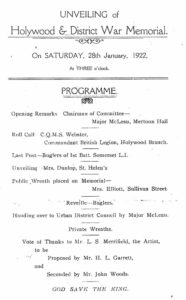
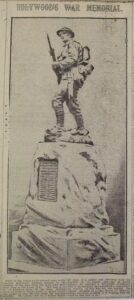
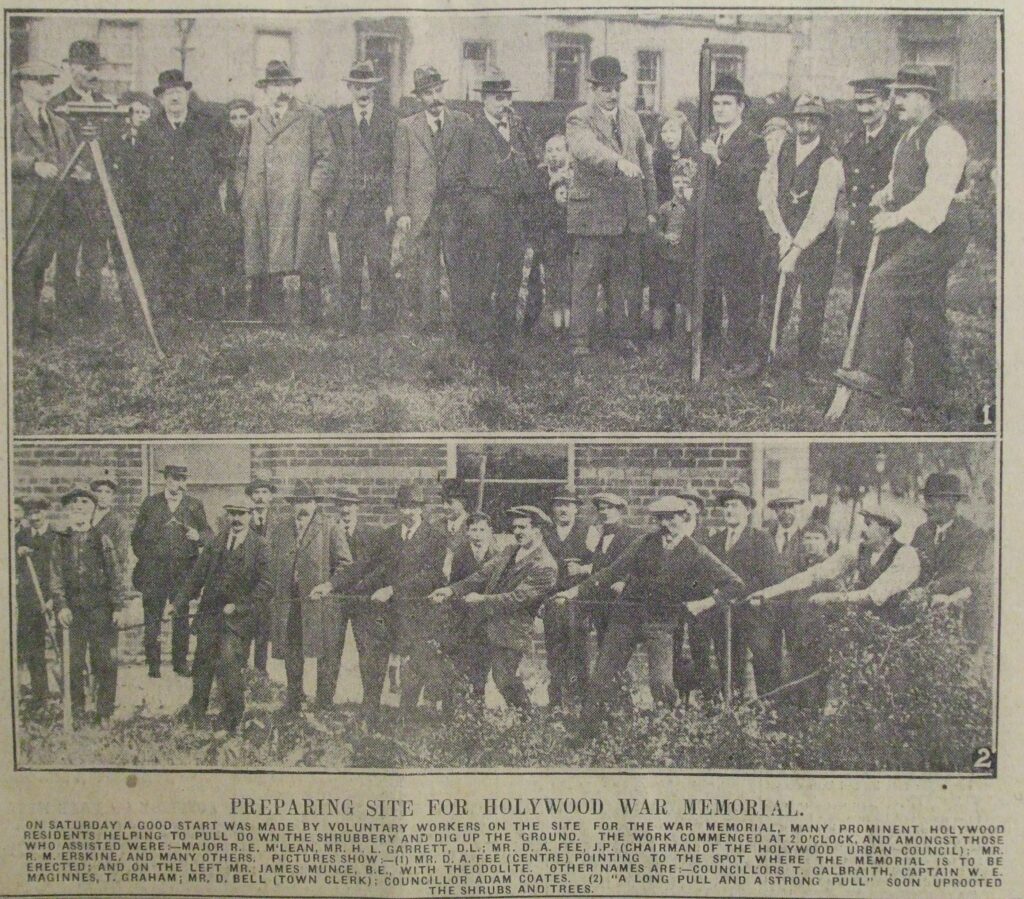




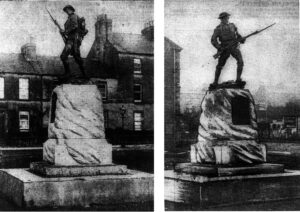





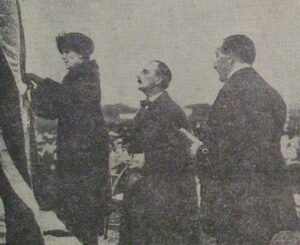
 The youngest fatality was only 17 years old. Rifleman David Martin, Royal Irish Rifles, was Killed in Action on 17th June 1916 and is buried in Authuile Military Cemetery in France. He was born on 27th April 1899 at Ballynahinch Road to David Martin and Annie Singleton.
The youngest fatality was only 17 years old. Rifleman David Martin, Royal Irish Rifles, was Killed in Action on 17th June 1916 and is buried in Authuile Military Cemetery in France. He was born on 27th April 1899 at Ballynahinch Road to David Martin and Annie Singleton.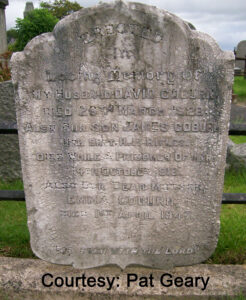
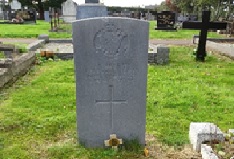
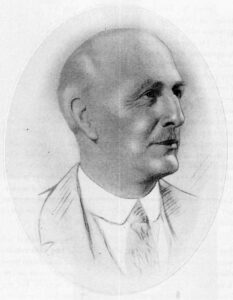






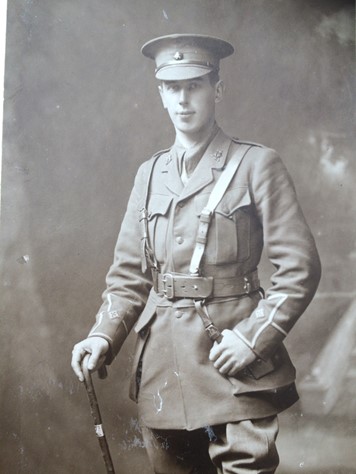 On this day in 1916 Lieutenant Edward Workman died in the Duchess of Westminster hospital, Le Touquet, France where he was being treated for wounds received exactly one week before in a raid on German trenches; it initially was thought that his wounds were not serious.
On this day in 1916 Lieutenant Edward Workman died in the Duchess of Westminster hospital, Le Touquet, France where he was being treated for wounds received exactly one week before in a raid on German trenches; it initially was thought that his wounds were not serious. The Salvation Army, like the YMCA and other societies, provided support functions for troops in theatres of war. The first mechanised ambulances to be used on the Western Front were provided by the Salvation Army and members served as ambulance drivers. The Salvation Army also provided rest and recreation huts where soldiers could meet and get news from home. Salvation Army bands provided concerts to entertain the troops. However, members of the Salvation Army also enlisted with the armed forces and three members were awarded the Victoria Cross. So far, I am only aware of only one war memorial tablet for a unit of the Salvation Army in Ulster – for No. 1 Corps (Ballymacarrett and Mountpottinger) whose premises were located at the corner of Mountpottinger Road and Calton Street.
The Salvation Army, like the YMCA and other societies, provided support functions for troops in theatres of war. The first mechanised ambulances to be used on the Western Front were provided by the Salvation Army and members served as ambulance drivers. The Salvation Army also provided rest and recreation huts where soldiers could meet and get news from home. Salvation Army bands provided concerts to entertain the troops. However, members of the Salvation Army also enlisted with the armed forces and three members were awarded the Victoria Cross. So far, I am only aware of only one war memorial tablet for a unit of the Salvation Army in Ulster – for No. 1 Corps (Ballymacarrett and Mountpottinger) whose premises were located at the corner of Mountpottinger Road and Calton Street.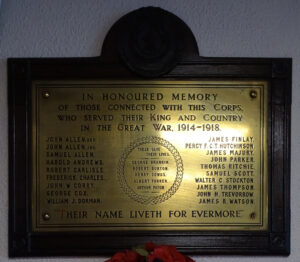 The memorial tablet records the names twenty-four members of this corps who served with the armed forces and five of the men died on active service overseas. The memorial tablet, now located at the Belfast Temple on the Cregagh Road, was made by David Mairs of Great Victoria Street and unveiled by Captain Herbert Dixon. The latter was the fourth son of Sir Daniel Dixon and represented the Belfast Pottinger constituency (later Belfast East) at Westminster. He was made 1st Baron Glentoran in 1939 and became the Third Baronet of Ballymenock in 1950, a few months before his death. In addition to the memorial tablet, there is also a pictorial parchment memorial dedicated to the Comrades of Ballymacarrett No 1 Band. The portraits of the fatalities in this article are drawn from the parchment commemoration.
The memorial tablet records the names twenty-four members of this corps who served with the armed forces and five of the men died on active service overseas. The memorial tablet, now located at the Belfast Temple on the Cregagh Road, was made by David Mairs of Great Victoria Street and unveiled by Captain Herbert Dixon. The latter was the fourth son of Sir Daniel Dixon and represented the Belfast Pottinger constituency (later Belfast East) at Westminster. He was made 1st Baron Glentoran in 1939 and became the Third Baronet of Ballymenock in 1950, a few months before his death. In addition to the memorial tablet, there is also a pictorial parchment memorial dedicated to the Comrades of Ballymacarrett No 1 Band. The portraits of the fatalities in this article are drawn from the parchment commemoration.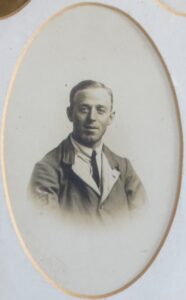 George Brankin was born on 3rd March 1888 at North Street in Newtownards to James Brankin and Agnes Anna Savage and his father died of tuberculosis at Thistle Street in Belfast on 6th July 1896 at the age of 40. In 1901, Agnes Brankin, now a draper, was living at Marymount Street in Ormeau Ward with five children ranging in age from 10 to 19 and a seven-year-old grandson. George Brankin was living at Carnan Street in Shankill Ward when he married Mary Jane Rowney on 31st March 1905 at Trinity Church of Ireland in Belfast. George and Minnie had five children between December 1906 and January 1916, with one child dying 24 days after being born. George Brankin was working at the Sirocco Works and living at Seventh Street when he enlisted with the Royal Irish Rifles and held the rank of Corporal when he was deployed to France with 14th Battalion in October 1915. George Brankin was wounded during the Battle of Albert in July 1916 and this photograph, in which he is wearing hospital blues, was taken whilst he was convalescing. He was subsequently stationed with a reserve battalion at Ballykinlar Camp before returning to his battalion on the Western Front in early May 1917. Sergeant George Brankin died of wounds at No 1 New Zealand Stationary Hospital on 8th June 1917, aged 29. He is buried in Hazebrouck Communal Cemetery in France and commemorated on the Rowney family memorial in Belfast City Cemetery. He is also commemorated on the Newtownards and District War Memorial, and on the memorial tablets for Davidson & Company and St Mark’s Church of Ireland in Newtownards. Mary Brankin, who had four children under the age of eleven, was awarded a pension of thirty-one shillings and three pence from December 1917. She also received a War Gratuity of fifteen pounds and ten shillings in November 1919.
George Brankin was born on 3rd March 1888 at North Street in Newtownards to James Brankin and Agnes Anna Savage and his father died of tuberculosis at Thistle Street in Belfast on 6th July 1896 at the age of 40. In 1901, Agnes Brankin, now a draper, was living at Marymount Street in Ormeau Ward with five children ranging in age from 10 to 19 and a seven-year-old grandson. George Brankin was living at Carnan Street in Shankill Ward when he married Mary Jane Rowney on 31st March 1905 at Trinity Church of Ireland in Belfast. George and Minnie had five children between December 1906 and January 1916, with one child dying 24 days after being born. George Brankin was working at the Sirocco Works and living at Seventh Street when he enlisted with the Royal Irish Rifles and held the rank of Corporal when he was deployed to France with 14th Battalion in October 1915. George Brankin was wounded during the Battle of Albert in July 1916 and this photograph, in which he is wearing hospital blues, was taken whilst he was convalescing. He was subsequently stationed with a reserve battalion at Ballykinlar Camp before returning to his battalion on the Western Front in early May 1917. Sergeant George Brankin died of wounds at No 1 New Zealand Stationary Hospital on 8th June 1917, aged 29. He is buried in Hazebrouck Communal Cemetery in France and commemorated on the Rowney family memorial in Belfast City Cemetery. He is also commemorated on the Newtownards and District War Memorial, and on the memorial tablets for Davidson & Company and St Mark’s Church of Ireland in Newtownards. Mary Brankin, who had four children under the age of eleven, was awarded a pension of thirty-one shillings and three pence from December 1917. She also received a War Gratuity of fifteen pounds and ten shillings in November 1919.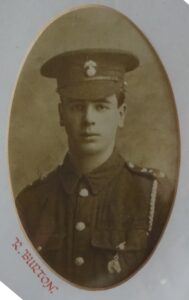
 Robert Burton was born around 1893 at Pollockshaws in Renfrewshire to Andrew Burton and Agnes Cameron and the family was living in Govan in 1901. The family was living at Hornby Street in 1906 when Andrew Burton, a coal trimmer, died in the Royal Victoria Hospital. He had fractured his skull after falling into the hold of Steamship Empress on 17th April 1906 and died three days later. In 1911, Agnes Cameron Burton was a linen weaver and living at St Leonard’s Street in Victoria Ward with six children, ranging in age from four to nineteen. Her two eldest children, Agnes and Robert, were both employed at Belfast Rope Works – Agnes as a netter and Robert as a machine boy. Robert enlisted with the Royal Inniskilling Fusiliers and was posted to the 5th Battalion, part of the 10th (Irish). The division departed Liverpool on 7th July 1915, bound for the Eastern Mediterranean and Robert Burton signed his army will on 22nd July on the Island of Lemnos. Lance-Corporal Robert Burton landed with 5th Battalion at Suvla Bay on 7th August 1915 and was killed in action eight days later at the age of 22. He is commemorated on the Helles Memorial on the Gallipoli Peninsula. His mother was awarded a pension of ten shillings per week from March 1917 and received a War Gratuity of three pounds in December 1919. On the 50th anniversary of his death, the Burton family donated a Bass drum and side drum to the Ballymacarrett and Mountpottinger Salvation Army Band in memory of Robert. A simple plaque adorns each drum.
Robert Burton was born around 1893 at Pollockshaws in Renfrewshire to Andrew Burton and Agnes Cameron and the family was living in Govan in 1901. The family was living at Hornby Street in 1906 when Andrew Burton, a coal trimmer, died in the Royal Victoria Hospital. He had fractured his skull after falling into the hold of Steamship Empress on 17th April 1906 and died three days later. In 1911, Agnes Cameron Burton was a linen weaver and living at St Leonard’s Street in Victoria Ward with six children, ranging in age from four to nineteen. Her two eldest children, Agnes and Robert, were both employed at Belfast Rope Works – Agnes as a netter and Robert as a machine boy. Robert enlisted with the Royal Inniskilling Fusiliers and was posted to the 5th Battalion, part of the 10th (Irish). The division departed Liverpool on 7th July 1915, bound for the Eastern Mediterranean and Robert Burton signed his army will on 22nd July on the Island of Lemnos. Lance-Corporal Robert Burton landed with 5th Battalion at Suvla Bay on 7th August 1915 and was killed in action eight days later at the age of 22. He is commemorated on the Helles Memorial on the Gallipoli Peninsula. His mother was awarded a pension of ten shillings per week from March 1917 and received a War Gratuity of three pounds in December 1919. On the 50th anniversary of his death, the Burton family donated a Bass drum and side drum to the Ballymacarrett and Mountpottinger Salvation Army Band in memory of Robert. A simple plaque adorns each drum.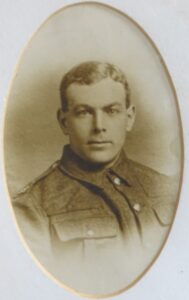 Henry Dowds was born on 30th March 1886 at Banoge near Waringstown to James Dowds, a weaver, and Rachel Mercier. Henry Dowds was a weaver when he married Minnie Bertha Lawton, a Salvation Army Officer, on 11th May 1906 in Scarva Street Presbyterian Church in Banbridge. In 1911, Henry was a docks labourer and living at Jonesborough Street with his wife and their first son, Horace Henry (3). Their second child, Norman Harold, was born at Jonesborough Street in May 1913. Henry Dowds enlisted with the Royal Irish Rifles and was posted to the 17th (Reserve) Battalion before being deployed to the 15th Battalion on the Western Front after December 1915. Henry Dowds was killed in action on 1st July 1916, aged 30, and is buried in Connaught Cemetery at Thiepval. Minnie Bertha Dowds was awarded a pension of twenty-one shillings per week from February 1917 and received a War Gratuity of £3 in October 1919.
Henry Dowds was born on 30th March 1886 at Banoge near Waringstown to James Dowds, a weaver, and Rachel Mercier. Henry Dowds was a weaver when he married Minnie Bertha Lawton, a Salvation Army Officer, on 11th May 1906 in Scarva Street Presbyterian Church in Banbridge. In 1911, Henry was a docks labourer and living at Jonesborough Street with his wife and their first son, Horace Henry (3). Their second child, Norman Harold, was born at Jonesborough Street in May 1913. Henry Dowds enlisted with the Royal Irish Rifles and was posted to the 17th (Reserve) Battalion before being deployed to the 15th Battalion on the Western Front after December 1915. Henry Dowds was killed in action on 1st July 1916, aged 30, and is buried in Connaught Cemetery at Thiepval. Minnie Bertha Dowds was awarded a pension of twenty-one shillings per week from February 1917 and received a War Gratuity of £3 in October 1919.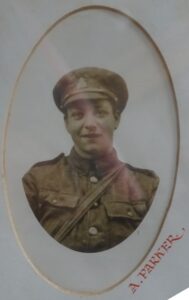 Albert Parker was born on 25th August 1898 at Jocelyn Avenue to George James Parker, an engine fitter, and Jane Thomson who lived at Frank Street in 1911 and at Castlereagh Street in 1918. Before the war Albert Parker was employed at McCaw, Stevenson and Orr Limited (printers, publishers, and chromo lithographers, Loop Bridge Works, Castlereagh Road). Albert Parker enlisted with the Royal Irish Rifles and was deployed to France with 14th Battalion in October 1915. He was Killed in Action on 16th November 1916, aged 18, and is buried in Pond Farm Cemetery in Belgium and commemorated on a family memorial in Carnmoney Church of Ireland Graveyard. Jane Parker was awarded a pension of five shillings per week and George James Parker received a War Gratuity of eight pounds and ten shillings in October 1919. His brother, John Parker, served with the same battalion and was transferred to the Class Z Army Reserve on 9th April 1919. He was subsequently awarded a 20% Disablement Pension in respect of gunshot wounds to the left hip at the rate of eight shillings per week. John Parker is also commemorated on the memorial tablet.
Albert Parker was born on 25th August 1898 at Jocelyn Avenue to George James Parker, an engine fitter, and Jane Thomson who lived at Frank Street in 1911 and at Castlereagh Street in 1918. Before the war Albert Parker was employed at McCaw, Stevenson and Orr Limited (printers, publishers, and chromo lithographers, Loop Bridge Works, Castlereagh Road). Albert Parker enlisted with the Royal Irish Rifles and was deployed to France with 14th Battalion in October 1915. He was Killed in Action on 16th November 1916, aged 18, and is buried in Pond Farm Cemetery in Belgium and commemorated on a family memorial in Carnmoney Church of Ireland Graveyard. Jane Parker was awarded a pension of five shillings per week and George James Parker received a War Gratuity of eight pounds and ten shillings in October 1919. His brother, John Parker, served with the same battalion and was transferred to the Class Z Army Reserve on 9th April 1919. He was subsequently awarded a 20% Disablement Pension in respect of gunshot wounds to the left hip at the rate of eight shillings per week. John Parker is also commemorated on the memorial tablet.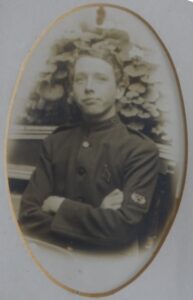 Arthur Paton (or Patton) was born on 28th March 1898 at Spruce Street in Cromac Ward to Arthur Patton, a baker, and Jeannie Galbraith and the family lived on the Woodstock Road before moving to Reid Street by 1911. Arthur Patton enlisted with the Royal Irish Rifles and was posted to the 14th Battalion on the Western Front after December 1915. Sergeant Arthur Patton was Killed in Action on 27th June 1917, aged 19, and is buried in Messines Ridge British Cemetery in Belgium. Locally, he is commemorated on a family memorial in Dundonald Cemetery and on the memorial Roll of Honour for Ravenhill Road Presbyterian Church. His mother was awarded a pension of five shillings per week from December 1918 and received a War Gratuity of thirteen pounds and ten shillings in October 1919.
Arthur Paton (or Patton) was born on 28th March 1898 at Spruce Street in Cromac Ward to Arthur Patton, a baker, and Jeannie Galbraith and the family lived on the Woodstock Road before moving to Reid Street by 1911. Arthur Patton enlisted with the Royal Irish Rifles and was posted to the 14th Battalion on the Western Front after December 1915. Sergeant Arthur Patton was Killed in Action on 27th June 1917, aged 19, and is buried in Messines Ridge British Cemetery in Belgium. Locally, he is commemorated on a family memorial in Dundonald Cemetery and on the memorial Roll of Honour for Ravenhill Road Presbyterian Church. His mother was awarded a pension of five shillings per week from December 1918 and received a War Gratuity of thirteen pounds and ten shillings in October 1919.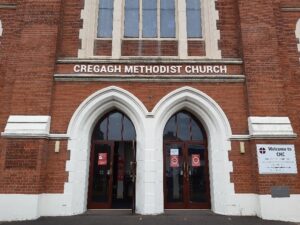

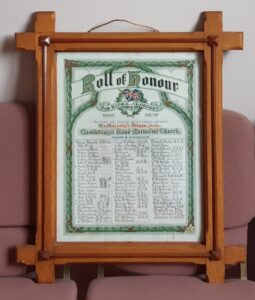
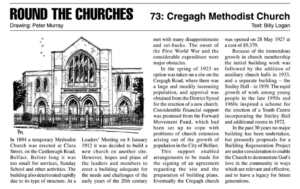
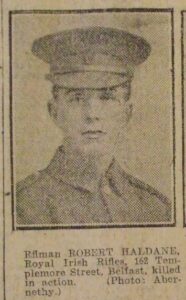

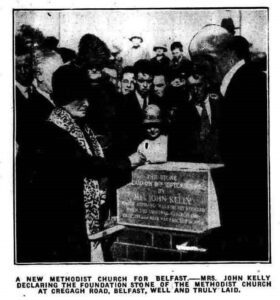
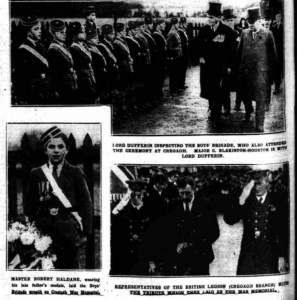
 The local newspapers reported that “Rev. Montgomery said many of the men whose names were on the memorial plaque had been baptised by him. All of them had gallantly responded to the call of duty, and that was one of the noblest testimonies that could be offered to their patriotism as well as their Christianity. In that respect they were unlike the young men of England. Scotland, and Wales, who in the middle stages of the war were obliged to serve in His Majesty’s forces whether they liked to do so or not. The young men of that congregation, and of Ulster generally, answered the call from within when they knew the motherland was in peril, and indeed not they alone, but Ulstermen all over the world—in Canada, the United States of America, and Australia. The same blood flowed in all their hearts, and there was the same desire on the part of all to stand for their country and their Empire.” (Northern Whig, 3rd November 1919).
The local newspapers reported that “Rev. Montgomery said many of the men whose names were on the memorial plaque had been baptised by him. All of them had gallantly responded to the call of duty, and that was one of the noblest testimonies that could be offered to their patriotism as well as their Christianity. In that respect they were unlike the young men of England. Scotland, and Wales, who in the middle stages of the war were obliged to serve in His Majesty’s forces whether they liked to do so or not. The young men of that congregation, and of Ulster generally, answered the call from within when they knew the motherland was in peril, and indeed not they alone, but Ulstermen all over the world—in Canada, the United States of America, and Australia. The same blood flowed in all their hearts, and there was the same desire on the part of all to stand for their country and their Empire.” (Northern Whig, 3rd November 1919).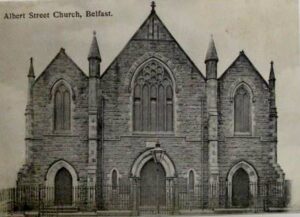 In 1970, due to demographic changes (partially due to the “troubles”) resulting in a fall in the size of the congregation, and the redevelopment plans for the Lower Falls area, the decision was taken to merge with the nearby congregation at Argyll Place Presbyterian Church on the Shankill Road. The final services in the Albert Street church were held on Sunday 31st January 1971 and led by the Reverend Brian Moore. On 7th February 1971, the first services were held in the Shankill Road premises of the newly named West Kirk Presbyterian Church. When the congregation moved, the war memorial plaque was not transferred to West Kirk.
In 1970, due to demographic changes (partially due to the “troubles”) resulting in a fall in the size of the congregation, and the redevelopment plans for the Lower Falls area, the decision was taken to merge with the nearby congregation at Argyll Place Presbyterian Church on the Shankill Road. The final services in the Albert Street church were held on Sunday 31st January 1971 and led by the Reverend Brian Moore. On 7th February 1971, the first services were held in the Shankill Road premises of the newly named West Kirk Presbyterian Church. When the congregation moved, the war memorial plaque was not transferred to West Kirk. Five sons of William Nugent and Sarah Nugent (nee McFerran) of Percy Street enlisted for military service in the Great War. Three were to survive but two lost their lives and are commemorated on this memorial plaque.
Five sons of William Nugent and Sarah Nugent (nee McFerran) of Percy Street enlisted for military service in the Great War. Three were to survive but two lost their lives and are commemorated on this memorial plaque.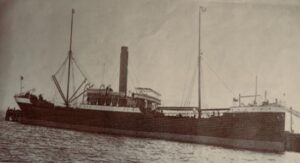 Guest author Jim has sent us in an article The Ordeal of the Bray Head about the sinking of the SS Bray Head in 1917.
Guest author Jim has sent us in an article The Ordeal of the Bray Head about the sinking of the SS Bray Head in 1917.